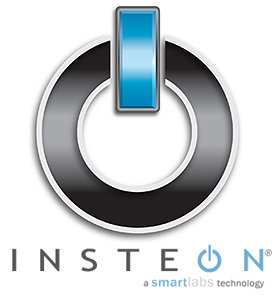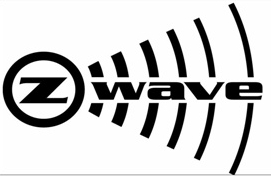Home Automation and the 'Internet of Things'
by Ganesh T S on October 4, 2012 10:30 AM EST- Posted in
- Gadgets
- Home Automation
- Wi-Fi
Electrical devices participating in home automation systems have to be integrated with some sort of communication protocol. These protocols may operate over powerline, RF or a combination of both. Some of these protocols are open standards, while others are proprietary (either belonging to a systems manufacturer or a silicon vendor). In this section, we will take a look at some of the major home automation options available to consumers.
Infrared Remote Control:
Infrared (IR) remote controls can be considered as the precursor of modern HA technologies. However, they are mainly used for point-to-point control flow. There is no bi-directional information exchange. Even though universal remotes have been around for a long time, their line of sight issues and non-interchangeability prevent them from being considered in the home automation space.
X-10:
True HA technologies require a HAN (home area network) where line of sight is not an issue and it is possible to have information flow in either direction. In the late 1970s, X-10 was developed as an international and open industry standard for home automation communication using power lines. A wireless radio based protocol transport is also part of the specification. More information about X-10 can be obtained here.
An X-10 network has transmitters, receivers and intermediate units which can receive and transmit X-10 commands. Transmitters are switches which send appropriate X-10 commands when activated, while receivers are devices which can shape the power delivered to the controlled devices (either as an on-off switch or by acting as a dimmer for a light fixture). Bidirectional devices can provide status and sensor information. A X-10 network can have up to 256 unique devices. Since the technology has been around for a long time, devices incorporating X-10 technology can be had for as low as $10.
Despite being simple and easy to configure, X-10 is slow (60 bps), has low reliability (particularly across circuit breakers and power line filters) and lacks encryption for security purposes.
UPB (Universal Powerline Bus):
PCS Powerline Systems (Northridge, CA) introduced the UPB protocol for home automation in 1998. It was based on the X-10 standard, but improved the transmission rate (480 bps) and provided higher reliability. UPB technology requires a router-like controller.

However, UPB doesn't seem to be an open standard. Despite winning a lot of people over from X-10 (because of its technical advantages), the technology continues to remain costly. The cheapest ones (such as wall switches) seem to retail for $75. UPB continues to enjoy support from CIs, but, it is doubtful whether users who want to install their own systems will opt for this technology.
ZigBee:
ZigBee, a pure wireless technology, is based upon the 802.15.4 IEEE standard for WPANs (Wireless Personal Area Networks). It is intended to be a low-cost, low-power wireless mesh network standard allowing for secure communication with a data rate of up to 250 kbps.

ZigBee was originally conceived as an alternative to Wi-Fi / Bluetooth around 1998 as a solution for self-organizing ad-hoc digital networks. ZigBee-based HA solutions operate in the 2.4 GHz range (though the standards allow for sub-GHz operation in the US and EU) and have a range of 70 meters indoors and up to 400 meters outdoors. The networks are self organizing, and any member can be the controlling node. There are plenty of ZigBee home automation solutions already available in the market.
Z-Wave:
Z-Wave, also a pure wireless technology, was developed by Zen-Sys, which was founded in 1999. In 2005, they initiated the Z-Wave Alliance, and the company itself was acquired in 2008 by Sigma Designs. The technology is similar at a macro-level to ZigBee in the sense that both are short-range wireless technologies which create a mesh network. However, while ZigBee operates mostly in the 2.4 GHz range, Z-Wave operates in the 900 MHz spectrum. Also, unlike ZigBee, Z-Wave is not an open standard.
Data rates can vary between 9.6 kbps and 40 kbps. Device pricing is also similar to ZigBee, with prices starting around $30. Both ZigBee and Z-Wave require a gateway to act as a master controller despite having mesh networking capabilities. Both of them can have up to 256 devices per network. Some Z-Wave controllers such as the Vera allow for combination of multiple networks to support more than 256 devices.
Insteon:
Insteon is one of the more recent home automation technologies. Like UPB, they are not a open industry standard. However, the technical capabilities have ensured its popularity. It was first deployed in 2005. One of its main plus points is the integration of both RF and powerline technologies for networking. The devices in a Insteon network operate in true mesh fashion, and so, there is no need for a special gateway / master controller (even though one is needed for web access). Data rates can vary between 2880 bps and 38400 bps depending on whether powerline or RF is used.

Like all other HA technologies described so far in this section, Insteon is used for small, low data rate transfers. Each network can have more than 16 million devices compared to the 256 possible in other technologies. One of the additional interesting aspects of Insteon is full compatibility with X10 devices. The pricing for devices incorporating Insteon technology starts at around $30.












54 Comments
View All Comments
brotj - Thursday, October 4, 2012 - link
The market is fairly confusing for a non techie customer, We were about to buy 3 Z-Wave locks from Lowes for our home a few weeks back. But then I noticed the lock keypads are not really weatherproof(very important in the northeast), and there is a $12.99/month fee to access your locks online. What a load...$299.99 for the door kit and base station
$129.99/additional door handle
$12.99/mo for as long as you want access remotely to your home....
We want:
-3 outdoor weather resistant locks(only one will be under an overhang)
-outdoor lights defaulted to motion detection, over ridden by secure mobile app or door locks
-indoor lights that can be grouped by zones
-cameras defaulted to motion detection, turned on anytime the doors are open, and overridden by secure mobile app
-thermostat
-All information stored on my own server, and accessible from mobile app.
The wifes primary concern: wants to turn off everything and make sure the doors are locked from her Android tablet from bed when I'm out of town.
...any suggestions
andrewaggb - Thursday, October 4, 2012 - link
Could get a micasaverde (vera)Personally I don't find their ui very intuitive, but it supports a lot of devices and there are mobile apps with no monthly fee.
I have one I've used for testing a few things but to be honest I don't even have it hooked up right now.
I have an alarm panel module (ip datatel - bat) that lets you control your alarm system from an android or ios app and it works pretty well - my wife can use it. I believe it does have a low monthly fee (I have one for testing/work so I'm not paying personally), but it's nice enough.
One of the things I do is write video surveillance software and so I dabble in home automation and alarm/sensor monitoring. I find many cheap ip cameras try to tie you into their software and online systems etc, but then fail to provide a complete solution (like what you are looking for). A full featured system like you are asking about... Is still hard to come by. Maybe somebody else knows one, but my own software, and any other software I have used (quite a few), don't provide everything you're looking for out of the box. But I don't work in the residential market so there may be a gem out there I just don't know about.
jhh - Thursday, October 4, 2012 - link
Unfortunately, my smart meter was installed this year, and only supports Zigbee Smart Energy profile. Perhaps someone will build a converter to make it available via WiFi, but otherwise, it's locked into a very restricted license for access, such that it is quite expensive for a hacker to use. One has to get a key from a RIM subsidiary, and the first license is quite expensive. The license is likely restricted to devices which have passed Smart Energy profile certification, and I have no idea how much that will cost. So, if someone wants to build a WiFi to Zigbee converter box, I'd be happy to buy one.Conficio - Thursday, October 4, 2012 - link
I do not care to much about home automation. However, I have noticed myself to stand in front of my house pushing the car remote and wondering why the door does not unlock ;-)So I think the much more desired use is integration of technology by open standard. For most younger people the cell phone is the key to their life. So why not have the ability to use it as door opener, access badge at work, gym locker key, ATM card, car key (with seat memory and other setting preferences), ...
The key to all this is the ability to register securely the user's device or the operational unit with the user's device. How does current home automation do this?
Also, where is open source on this? I really can't see myself using a third party web service to access my house remotely? Next thing police forces them to open the door? So I want an open source based control server on my own hardware.
Also one of the objects that many geeks want to remote control is their computer(s). What is the state of Wake on LAN to achieve this? Most of what I have seen is standard routers not having the feature.
jhh - Thursday, October 4, 2012 - link
I have a zoned heating system with 3 zones. I probably could have gotten away with 2, but the third came with only the cost of an extra thermostat. Unfortunately, the zoning system provides no input to the HVAC system other than the 2 stage furnace or 2 stage air conditioner. Ideally, this would all feed back into the control board in the furnace, with information on how many zones need heat/cooling, the size of the zones, whether they are in the sun or not, and the outside temperature. This would allow better control over whether the second stage of the heat/AC is useful, and how fast the fan should run based on the number of open zones. A heating cycle could be extended if one zone was close to needing heat rather than more frequent furnace cycling which is hard on the heat exchanger. The set-points for each thermostat could be maintained in the control board, and controllable through a smart phone app or locally. But, the thermostat could really be reduced to just a temperature sensor with no user feedback. The NEST thermostat is an overly expensive device primarily because its combining a user interface, processor, controls, and temperature sensor. I would rather have the intelligence in the furnace control board (or blower control from outside the control board and intelligence in the HA system).Rick83 - Thursday, October 4, 2012 - link
Essentially, for HA to really work, there's a higher level protocol that's going to be required. And this has to be standardized.There's currently a big push for this kind of thing, with many patents and standards being published, and I wouldn't recommend to anyone to invest heavily before this has somewhat settled down.
Zigbee still seems to be THE M2M-technology according to what I see at work (M2M research lab at a large European telco), as it is much cheaper to implement than the heavier protocols.
Future 802.11 might change this, but at this time, I'd put the focus there.
Finally, until there are better presence /identification /activity sensors and the required logic to learn usage patterns, it will remain remote control. This is convenient, but it doesn't go far enough for me to truly adopt it. Never mind spending big money on it.
For now it is still mostly faffing about with electronics, and in that case I would stick to rolling your own, in the most modular way possible, so that if eventually a consensus standard emerges, the USB of HA, you can swap out your interfaces, without touching the hardware.
JoanSpark - Saturday, October 6, 2012 - link
+1The market still is too cluttered to propose 'the standard' that will be the USB of HA, especially as most of the ones currently being offered are proprietary and heavily protected by licenses.
I'd also like to point out that there is more going on/needs to be looked at for all those gadgets and helpers to be more efficient (resource usage).
These days every little thing comes with it's own acdc converter if it needs non-neglible power for displays or actors, this means all over the place there are powerplugs with their inefficiencies and clutter. There is (afaik) no venture to standardize the powersupply of things in the 0.5W - 30W range.
Ideal would be some kind of low voltage dc distribution network for each house/apartment that is standardized similar to 230VAC power distribution.
But there is NOTHING going on there - and most importantly the sockets/plugs for this. NOTHING (besides some 600V DC plugs for server environments - google: 'datacenter VDC').
And to tell you the truth, once you got this distribution network, it's easy to just pull some more wires along for some protocol/interface, which would even eliminate the need for wireless most of the time.
That would be the USB of HA ;-)
JoanSpark - Saturday, October 6, 2012 - link
correction: http://www.google.com/search?q=datacenter%20380vdc... ..for the datacenter DC power distribution stuffJoanSpark - Saturday, October 6, 2012 - link
addendum:http://blog.circuitprotection.com/blognews/low-vol...
alek99 - Thursday, October 4, 2012 - link
I have a rather nifty (nutty?!?) application of Home Automation that allows people on the Internet to control my Holiday displays at Halloween and Christmas - http://www.komar.org/cgi-bin/halloween_webcam and http://www.komar.org/cgi-bin/christmas_webcamThese have been around for a while, so using X10 ... and oldie but goldie. Lotta various control & sensor stuff" out there (and cheap) ... but yea, is a bit slow and has some reliability issues ... although many of those can be addressed via some really cool devices from this guy - http://jvde.us/
I'd love to go to a higher tech (and agree that it will converge on Wi-Fi) but am waiting for the marketplace to mature and stuff to get cheaper.
Great overview of HA Ganesh!